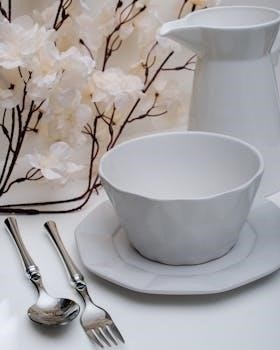Coin collecting, or numismatics, is a popular hobby enjoyed worldwide. It involves studying and collecting coins for their historical, artistic, and monetary value. This pursuit can start simply with spare change, and it is an accessible and low-cost hobby with numerous resources for beginners.
What is Numismatics?
Numismatics is the study of coins, currency, and other forms of legal tender, encompassing not just the act of collecting, but also the historical, economic, and artistic aspects of these objects. It’s a discipline that goes beyond mere accumulation, delving into the stories behind each piece, exploring their origins, the materials used, minting processes, and the societal context in which they were created and circulated. Numismatists, the individuals who engage in this study, examine coins for their designs, inscriptions, and the symbols they bear, to understand their cultural significance. They seek to identify different types of coins, from the common to the rare, often using specialized tools and resources to aid their study, and contributing to a larger understanding of history. Numismatics also touches upon economic history, shedding light on trade routes, monetary policies, and the rise and fall of empires, as reflected in the coins they used. This scholarly pursuit elevates coin collecting into a rich and educational experience, allowing collectors to become historians in their own right, with each coin offering a piece of the past.
Why Collect Coins?
People collect coins for a multitude of reasons, making it a truly diverse hobby. For some, it’s the thrill of the hunt, the excitement of discovering a rare or unique piece to add to their collection. The satisfaction of completing a set after months of diligent searching is a significant draw, and it’s a pursuit that combines patience with reward. Others are drawn to the historical aspect, viewing coins as tangible pieces of history that offer a unique glimpse into past eras. Each coin tells a story, reflecting the art, culture, and economic conditions of its time. Coin collecting can be educational, teaching about different societies, rulers, and historical events. Furthermore, coins can be seen as an investment, as some coins appreciate in value over time, adding an element of financial interest. For many, it is simply a relaxing and engaging pastime, a way to unwind and focus on something tangible. This hobby offers a connection to the past, a challenge in the present, and, potentially, financial benefits, making it a rewarding endeavor for many.

Getting Started with Coin Collecting
Beginning coin collecting is easy and accessible, often starting with the coins you already have. You can explore your spare change for interesting pieces and learn about different coin series and designs to get started on your collecting journey.
Beginner-Friendly Coin Sources
Starting your coin collection doesn’t require a trip to a specialty shop. Many beginner-friendly sources are readily available. Your own pocket change is an excellent place to begin; examine the coins you use daily. Banks are another great resource. You can often request rolls of specific denominations, providing a variety of coins to sort through. Family and friends can also contribute; they may have old coins tucked away they’d be willing to share. Coin shows and local coin clubs offer opportunities to find unique coins and connect with experienced collectors. Online marketplaces can also be a source, but proceed with caution, especially when starting. Finally, consider reputable coin dealers, both physical and online, for more specialized or rare finds. Remember to research any source before you commit to a purchase to ensure you are getting genuine coins at a fair price. These sources provide a wide variety of coins for beginners to start their collecting journey.
Essential Tools for Coin Collecting
To properly care for and enjoy your coin collection, you’ll need some essential tools. Soft cotton gloves are crucial for handling coins, preventing oils from your skin from damaging their surfaces. A magnifying glass or loupe allows you to examine coins closely for details, mint marks, and any imperfections. Coin albums or holders provide safe storage and organization, preventing damage from scratches and handling. A soft cloth or brush can help with gently removing dust and debris. Calipers are useful for measuring coin diameter and thickness, aiding in identification. A good reference book, such as the Red Book, is vital for identifying and valuing your coins. Finally, consider investing in a scale to weigh your coins, as weight can be an important factor in identification. These tools will help you preserve and appreciate your coin collection while also helping to expand your numismatic knowledge.

Coin Collecting Resources
Numerous resources are available to aid coin collectors. These include guides like the Red Book, online forums, educational websites, and free downloadable material. These resources offer information on coin identification, valuation, and care.
The Importance of Coin Guides (Red Book)
Coin guides, particularly the “Red Book,” are crucial for both novice and experienced collectors. These guides provide detailed information about various coins, including their values, rarity, specifications, and historical context. The Red Book, officially known as “A Guide Book of United States Coins,” is a long-standing publication that has become a staple for collectors, offering a comprehensive look at U.S. coinage. These resources serve as educational tools, helping collectors understand the intricacies of coin collecting and appreciate the nuances of their collections. They offer photographs for identification, historical details, and market values, which are essential for making informed decisions when buying or selling coins. Furthermore, guides often include sections on coin grading, care, and collecting terminology, ensuring collectors have a solid foundation of knowledge. The Red Book, in particular, is updated annually to reflect changes in the coin market, making it a reliable source of current information. Whether you’re trying to identify a coin, determine its worth, or learn about its history, coin guides are indispensable tools for any numismatist. They empower collectors to make informed decisions and navigate the world of coin collecting with confidence.
Free Online Resources and Forums
The internet offers a plethora of free resources for coin collectors of all levels. Numerous websites provide educational articles, price guides, and research materials, all accessible without any cost. These resources can be invaluable for both beginners and seasoned numismatists seeking to expand their knowledge or evaluate their collections. Many numismatic organizations and reputable dealers offer extensive online databases of coin information, including detailed descriptions, images, and historical background. Online forums and communities provide a platform for collectors to connect, exchange knowledge, and seek advice from more experienced enthusiasts. These forums often feature discussions on various aspects of coin collecting, from grading and preservation to identifying rare coins and market trends. Furthermore, some websites provide free downloadable e-books and guides on coin collecting, covering a wide range of topics. These digital resources can help collectors delve deeper into the hobby and learn at their own pace. From identification tools to market analysis, the free online resources available to coin collectors are extensive and readily available, making it easier than ever to engage in this fascinating hobby. These platforms foster collaboration and continuous learning within the numismatic community.

Exploring Coin Collecting Themes
Coin collecting offers diverse themes, from specific series to historical periods. Collectors often focus on particular designs, mints, or countries. Exploring themes adds depth and focus to any collection, enhancing the hobby’s enjoyment and educational value.
Popular Coin Series to Collect
Many collectors are drawn to specific coin series, each with its own appeal and challenges. The Lincoln Wheat cent series, for example, is a popular choice, particularly early date issues from 1909 to 1925, which are sought after for their rarity and historical significance. Another popular series is the Morgan silver dollar, prized for its design and silver content. Commemorative coins, such as those from the Montreal Olympics, also attract significant attention. Collectors may also focus on specific bullion coins, like the Canadian Maple Leaf, renowned for their precious metal content and design. Furthermore, series of medieval gold nobles, introduced by King Edward III, are attractive to collectors of English hammered coins. Building a collection of any of these series involves understanding their unique characteristics, including their designs, compositions, and mint marks. These series provide a focused and rewarding path for collectors of all levels.
Focusing on Specific Historical Periods
Collecting coins from a specific historical period can offer a rich and educational experience. For instance, one might focus on ancient Roman coins, which provide a tangible link to the past, revealing details about the emperors, gods, and daily life of the era. Medieval coins, such as the English hammered coins, also provide a fascinating glimpse into the economic and social systems of that time. The study of Byzantine coinage opens up a window into the art and culture of the Eastern Roman Empire. Focusing on a specific era involves delving into the historical context of the coins, learning about the political events, cultural trends, and technological advancements that influenced their production. This approach allows collectors to develop a deep understanding of a particular period through the lens of its monetary system, transforming coin collecting into a journey through time.

Managing and Valuing Your Collection
Properly managing and valuing your coin collection is crucial. This involves understanding coin grading basics and implementing effective preservation and storage techniques. These steps ensure your collection’s long-term value and enjoyment for years to come.
Coin Grading Basics
Coin grading is a critical aspect of numismatics, determining a coin’s condition and therefore its value. It involves assessing several factors, including the coin’s surface preservation, luster, strike, and any wear or damage. Professional grading services, like NGC, provide standardized evaluations that are widely accepted in the market. The Sheldon Scale is commonly used, ranging from Poor (PO-1) to Mint State (MS-70). A coin in “Mint State” means it has never been circulated, whereas a circulated coin will show signs of wear. Understanding the different grading terms such as “About Uncirculated” (AU) and “Extremely Fine” (EF or XF) is essential to accurately assessing your coins. Many online resources, and books like the Red Book, offer detailed guidelines to help you learn how to grade. The goal is to be able to differentiate between a coin that is in excellent condition versus one that has seen extensive circulation, as this has a major impact on the value.
Coin Preservation and Storage
Proper preservation and storage are vital to maintain the condition and value of your coin collection. Coins should always be handled with care, preferably by the edges, to avoid transferring oils and dirt from your hands that can cause damage. Avoid cleaning coins with harsh chemicals or abrasives, as this can significantly devalue them. Instead, use coin-safe holders, albums, or storage cases made from inert materials, which are designed to protect coins from the elements and physical damage. These storage solutions prevent scratching, tarnish, and corrosion. Store your collection in a cool, dry place, away from direct sunlight and moisture. Consider using desiccants to absorb humidity if needed. Many numismatic suppliers offer high-quality storage options. Organizing your collection into categories (by type, date, country) is also crucial to efficiently manage and access the coins. By taking these precautions, you are ensuring that your collection remains in its best possible state for years to come.
Comments